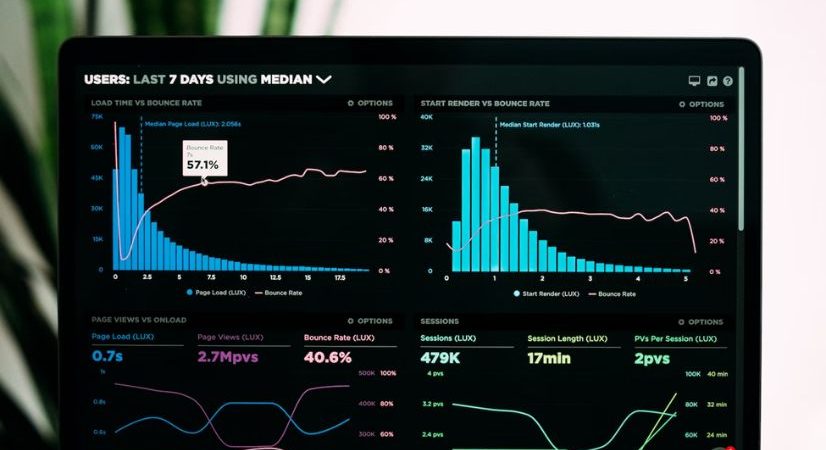The Ultimate List Of Famous TikTok Girls (2025): Who’s On Top, How They Grow & How Much They Earn?
Subhasree Nag, 2 days ago

Subhasree Nag, 2 days ago

Subhasree Nag, 4 days ago

Subhasree Nag, 4 days ago

Subhasree Nag, 5 days ago

Subhasree Nag, 6 days ago


There are a number of different revenue attribution models to choose from. One is called a Time-Decay model, and the other is called a U-shaped model. Regardless of which you choose, the process of using a time-based model can be quite useful in helping you to understand the relationship between various traffic sources and your business’s revenue.

If you’re wondering which marketing channels are best suited for your campaigns, the U-shaped type can help you get an overview of your entire customer journey. This model is especially useful for understanding which touchpoints are contributing most to conversion. It also helps you find the most successful combinations of media.
While U-shaped attribution (https://en.wikipedia.org/wiki/Attribution_(marketing)) is relatively simple to understand, it does limit your visibility of important mid-funnel touch points. These touches are often referred to as nurturing touches. They are critical drivers of the customer journey. As a result, they can be important to your long-term success.
For example, a prospect may click on an ad for your company on Facebook, visit your site, then sign up for a newsletter or email list. In this case, you’d receive 40% credit for the ad, and 20% for email. But what about the middle?
U-shaped attribution assigns more credit to the first and last touchpoints, and less to the middle. This can lead to over-simplifying the path a customer takes. Also, it isn’t always easy to apply this model in cases where the customer’s journey isn’t clear.
A W-shaped attribution is similar to the U-shaped model, but it is a more complicated solution. It allocates more credit to the first and last touch points before purchase and less to the middle. Adding weighting for the opportunity stage is helpful in identifying which touchpoints drive purchase intent.
Ultimately, the U-shaped model is a good choice for teams that want a simplistic, easy-to-understand view of the consumer’s journey. However, it’s also possible to lose a data view in Google Analytics, especially for campaigns that have a long buying cycle.
The time decay model is an attribution model that assigns a different value to different touchpoints based on their proximity to a conversion. Essentially, this model is meant to help you understand which tactics lead to conversions. This will give your insight into what tactics to use to drive your business forward.
A Time Decay model is ideal for longer sales cycles. It gives more credit to the touchpoints closest to conversion. However, it doesn’t discount other touch points that have been a part of the customer journey.
Typically, this type of attribution model uses a percentage to allocate credit to each touch point. For example, it may give 30% of the credit to the first touch point, 10% to the middle touch point, and another 10% to the remaining touch points.
While this model is effective for long sales cycles, it isn’t great for top-of-funnel marketing efforts. For instance, a Facebook ad might be the last touch point before the sale, but it doesn’t matter if the prospect has gone to a website, downloaded an eBook, or signed up for a newsletter.
On the other hand, a multi-touch attribution model takes into account the impact of each touch point in the buyer’s journey. In addition to giving more credit to the touch point closer to the conversion, it also takes into account the cost of each touch point.
However, multi-touch attribution models require a lot of time and effort to gather rich data. Several months might be needed for an attribution model to become fully functional. And while it might be easier to calculate the revenue attribution to a particular channel, it is not as easy to determine which channels are actually driving the most conversions. That’s a fact.
A report based on pages that have been viewed on your website is like a report on your customer’s activity on your site. The trick is sifting through the data to find the most useful information. If you don’t do this, you’ll end up with a lot of jumbled-up numbers.
Luckily, there are tools aplenty to help you get the job done. These include the Google Analytics dashboard, Word Stream’s sexiest tool, and even your favorite web browser.
The best way to go about this exercise is to download the free Google Analytics desktop app and sign up for a Google account. Once you’re up and running, you’ll be rewarded with an overview of your traffic activity. You can then drill down to the more detailed level if you want to.
While you’re at it, you may also wish to check out the new Google Analytics mobile app, which is a cinch to set up and will provide you with detailed traffic data in a snap. In addition to providing your visitors with an easy-to-read report of their most recent actions, the app will allow you to track your most frequent visitors as they browse your site.
For instance, you can view the most frequent visitors to your site by filtering by age range and location. On top of that, the app will even show you which pages on your site are being visited by which users, ensuring your site isn’t losing a valuable customer due to outdated content.
Lastly, you can revert to using your desktop app whenever you choose or switch to the mobile app for a more seamless experience. Keeping up with your traffic data is a full-time job in and of itself, but a tool like Google Analytics is a boon to any digital marketing manager.
There are a number of different tools available to help you with revenue attribution. For example, there is Infinity, which is a platform that you can use to manage projects and projects’ outcomes. You can also use Google Analytics, which you can read about here, to measure sales and conversions. But, if you want to do both, you need to integrate them.
However, it can be a bit of a challenge to get the data together in one place. When I was working with a client, my team needed to match up campaign data with customer conversations. Thankfully, we were able to find a workaround that enabled us to do that. With the help of a few integrations, we managed to combine our data and create a single source of truth.
Integrally is an application that allows you to quickly and easily connect your applications. It has millions of ready-to-activate integrations. These include Google Analytics and Infinity. Not only can you do this, but you can also get friendly support from their experts.
Plus, you don’t have to worry about learning a bunch of new technical skills. As a matter of fact, there is even a tutorial to help you get started. If you’re still having trouble, though, you can always reach out to the company’s live chat representatives.
Another application you can integrate with is Demand base. This is an email marketing and calendar integration application that syncs with your Google emails and calendar events. All you have to do is authenticate with your G Suite account and set up a login. After that, you can start to track your communications across your account stakeholders.
Read Also:
Abdul Aziz Mondol is a professional blogger who is having a colossal interest in writing blogs and other jones of calligraphies. In terms of his professional commitments, he loves to share content related to business, finance, technology, and the gaming niche.